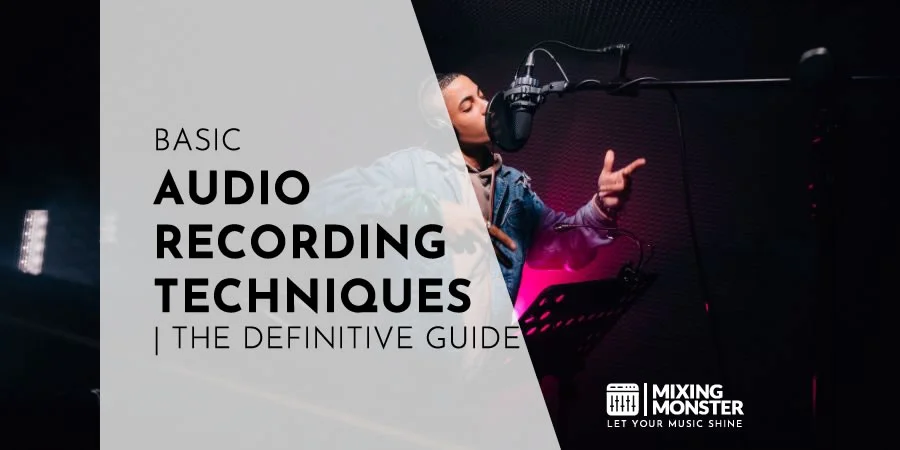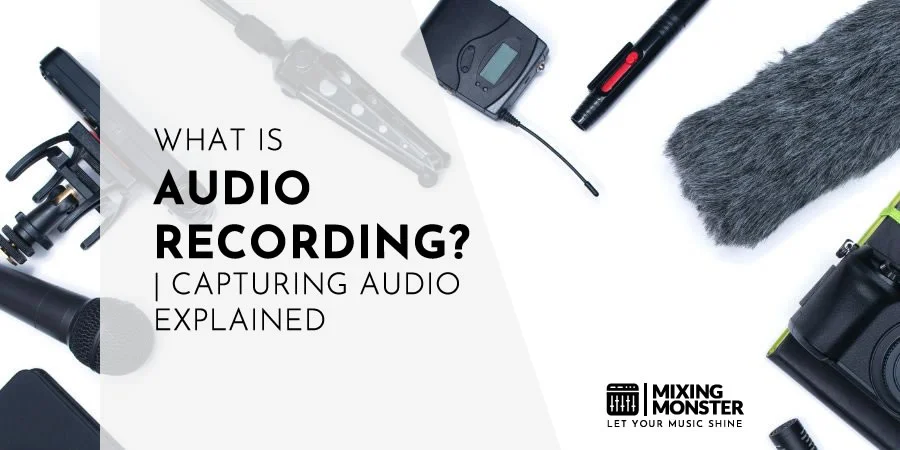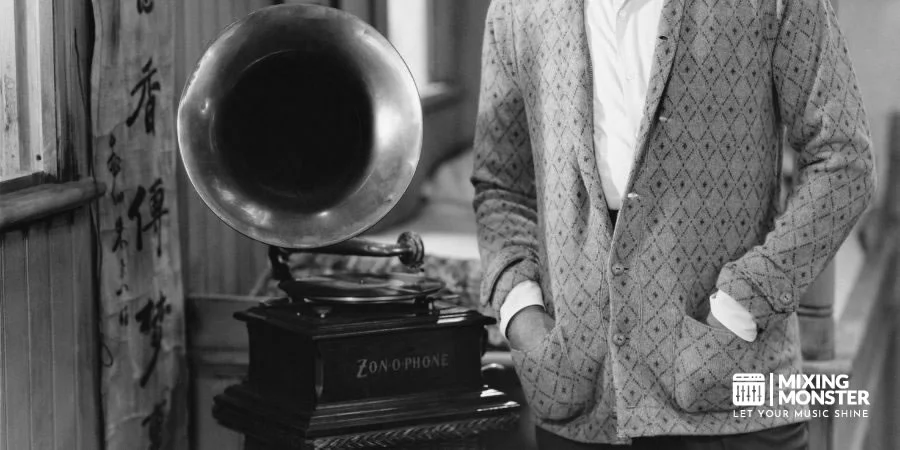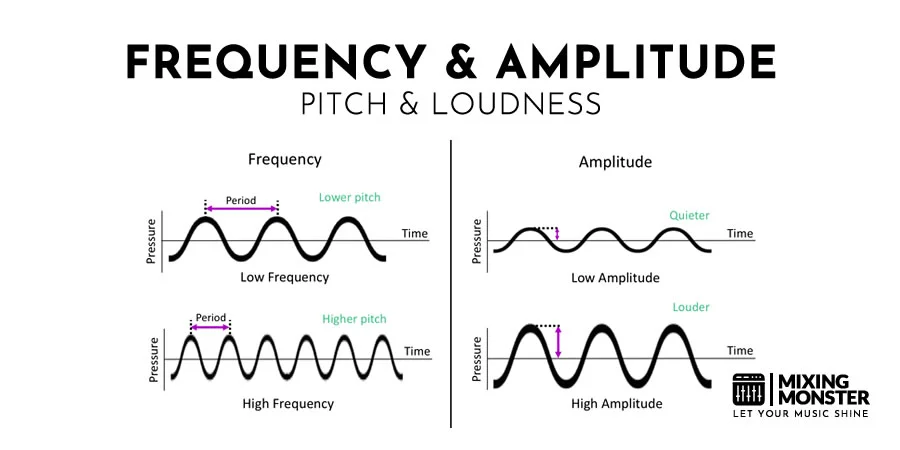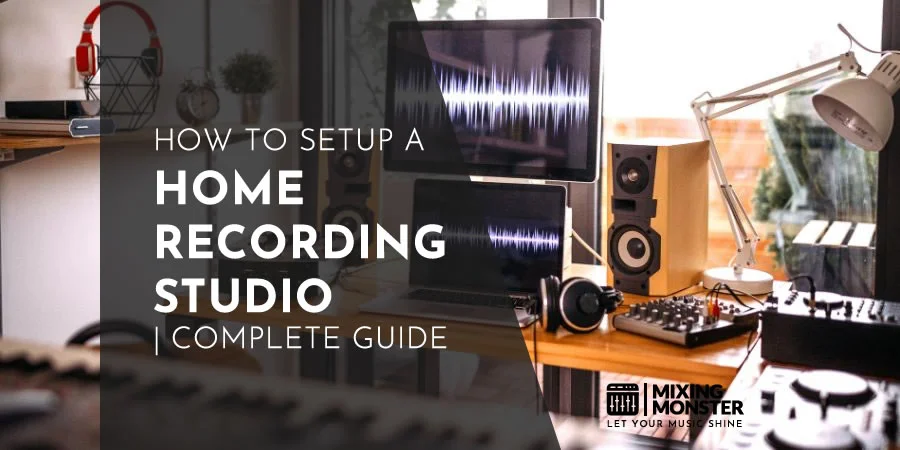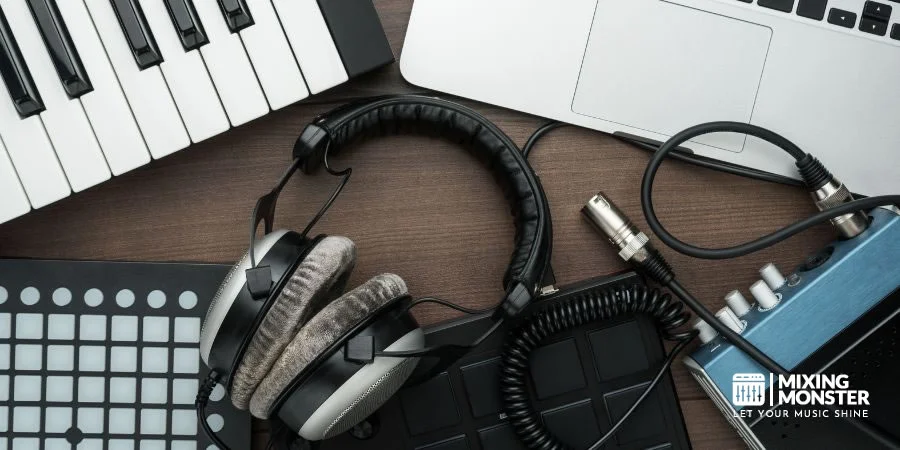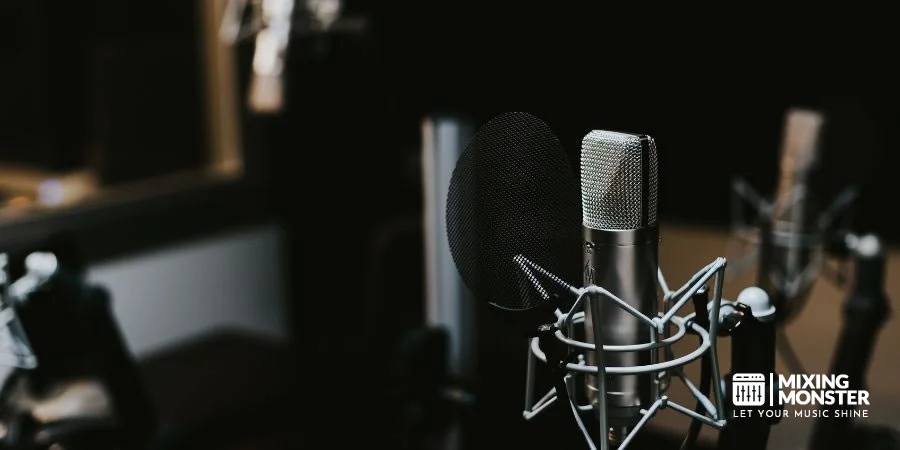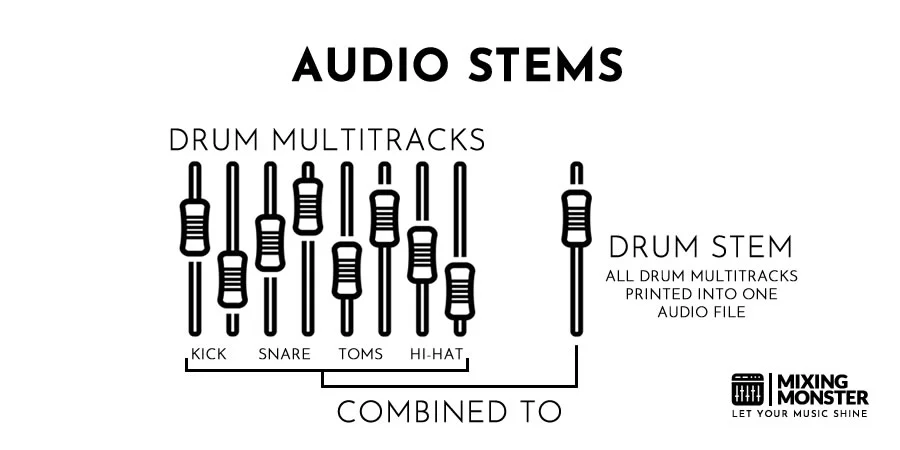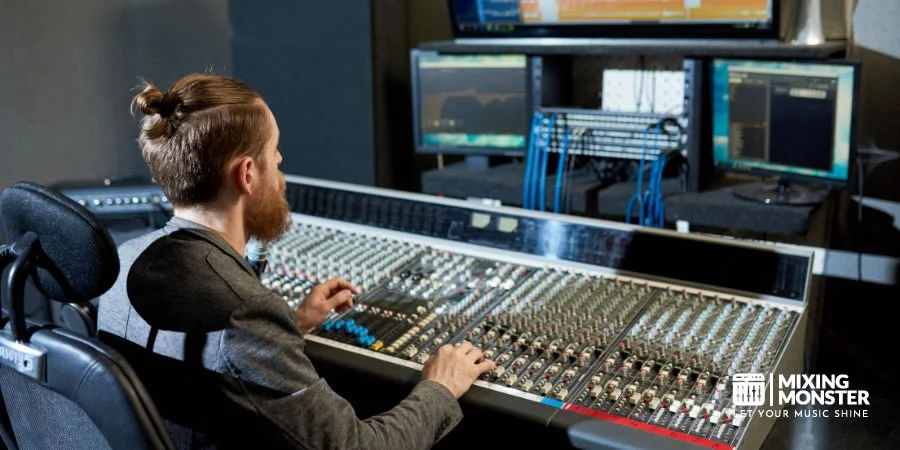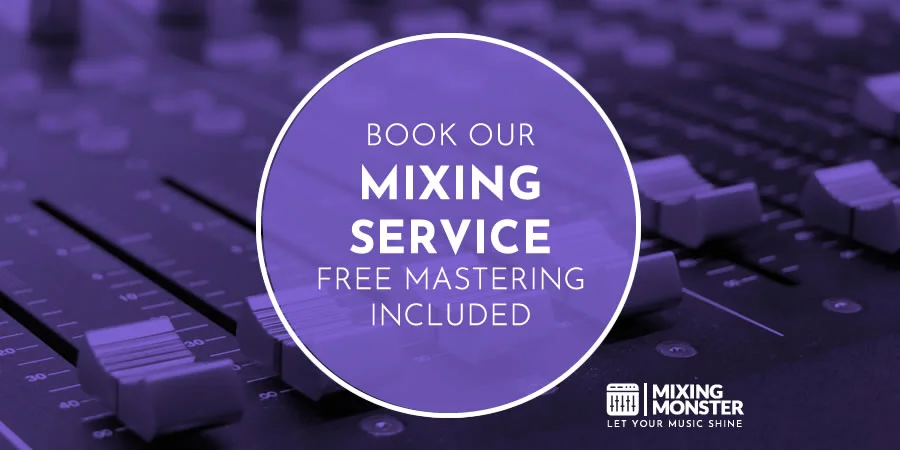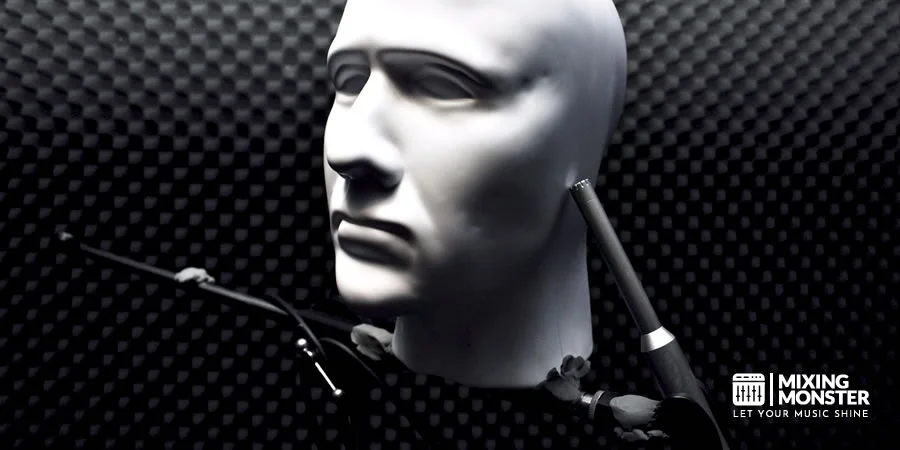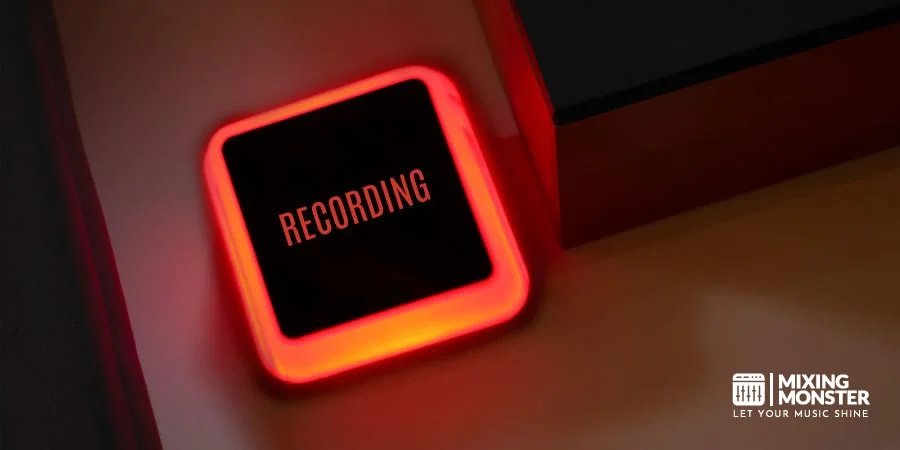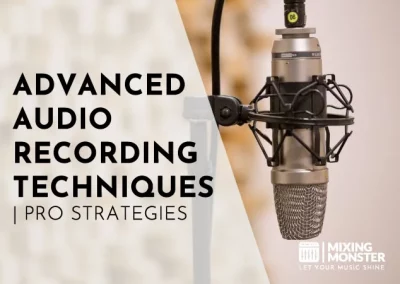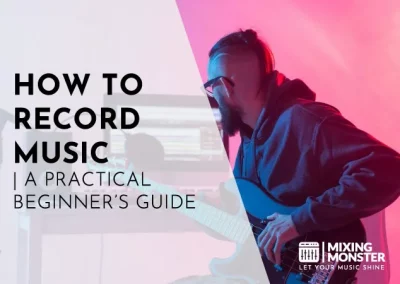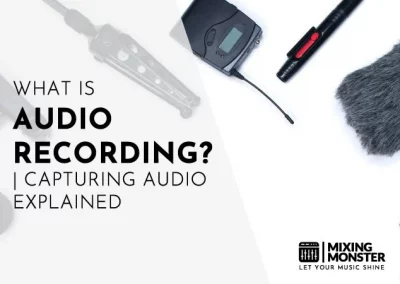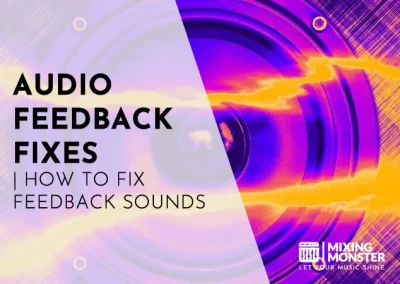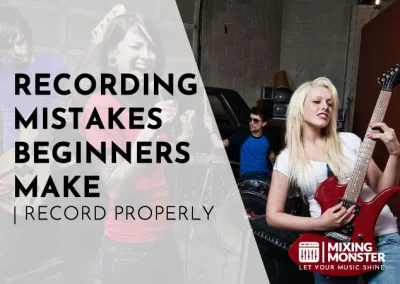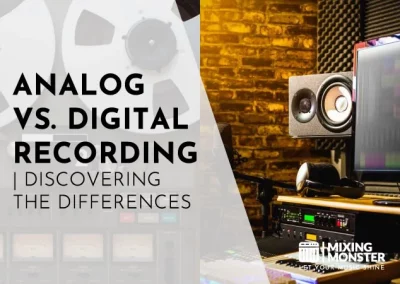Affiliate Disclaimer: We may earn a commission if you purchase through our links
Stepping into audio recording techniques can be exciting, especially when armed with the proper knowledge. Our comprehensive guide on basic audio recording techniques is crafted to give beginners and enthusiasts a deeper dive into the nuances of capturing high-quality sound. Prepare to be immersed in an ocean of practical tips, strategic techniques, and industry secrets that can make your recording experience genuinely remarkable.
Audio recording techniques involve strategically using equipment and software to capture, mix, and enhance sound. From microphone placement to mastering, these methods significantly affect the quality of the recording.
Are you ready to transform your understanding of audio recording techniques and take your sound quality to the next level? Dive in with us to unravel the mystery of sound capturing and discover how professionals craft mesmerizing auditory experiences.
Table Of Contents
1. Introduction To Audio Recording Techniques
2. Fundamentals Of Sound And Acoustics
3. Essential Equipment For Audio Recording
4. Basic Audio Recording Techniques
5. Advanced Techniques In Audio Recording
6. Tips And Tricks For Quality Audio Recording
7. Start Crafting Your Unique Sound
8. FAQ

1. Introduction To Audio Recording Techniques
Welcome to the world of audio recording techniques! It’s a landscape teeming with nuances, steeped in a rich history, and crucially, ever-evolving.
By delving into this captivating subject, you’re taking the first step towards honing your craft and creating top-notch audio content.
Want to take a step back and immerse yourself in the question of what audio recording is? This article might be helpful:
The Evolution Of Audio Recording
Audio recording has undergone a dramatic transformation since its inception. The journey from phonographs to today’s sophisticated digital systems narrates a story of relentless human ingenuity and technological advancements.
Understanding this evolution doesn’t just offer intriguing historical insights and helps us appreciate the foundations upon which modern recording techniques rest.
Why Understanding Basic Recording Techniques Matters
Whether you’re a budding podcaster, an aspiring musician, or a seasoned audio engineer, mastering basic audio recording techniques is paramount. The bedrock supports your ability to capture sounds as you intend.
Further, these techniques open the door to creative possibilities, enabling you to manipulate audio and create a distinctive sonic signature. It’s your initiation into a world where you dictate how your listeners perceive sound. And that’s a potent ability to wield, wouldn’t you agree?
2. Fundamentals Of Sound And Acoustics
Delving deeper into audio recording techniques, we stumble upon the fascinating domain of sound and acoustics. Grasping these rudimentary concepts is essential as they are the blueprint for any audio recording process.
Sound Properties And How They Affect Recording
Did you know that sound travels in waves and has frequency, amplitude, and timbre properties? And each of these properties profoundly influences the quality and characteristics of your recording.
For instance, frequency corresponds to the pitch of the sound, while amplitude pertains to its loudness. And timbre? It makes a guitar sound different from a piano, even when they play the same note.
Understanding these properties is vital in making informed decisions during recording.
| Property | Description |
| Frequency | Determines the pitch of the sound |
| Amplitude | Influences the loudness |
| Timbre | Defines the character or quality of the sound |
Understanding Room Acoustics For Optimal Recording
Have you ever wondered why your favorite song sounds different in your living room than in a concert hall? That’s room acoustics in action! Every space has its unique sound profile, significantly impacted by factors such as room size, shape, and the materials used in its construction.
You can manipulate your recording environment to achieve the desired sound by understanding room acoustics. Whether setting up a home studio or recording in a professional one, acknowledging the influence of room acoustics is a crucial step towards quality audio recording.
Want to learn more about how to set up a home recording studio? Here you go!
3. Essential Equipment For Audio Recording
It would help to have suitable tools to bring your audio recording techniques to life. This section takes you on a tour of the essential equipment you’ll need on your audio recording journey. Let’s explore these in more detail.
Microphones: Types And Uses
Microphones are the first point of contact in any audio recording setup, capturing sound waves and converting them into electrical signals. They come in various shapes and sizes, each suited to a particular purpose.
Understanding the different types, such as dynamic, condenser, and ribbon mics, along with their applications, will equip you to choose the perfect microphone for your recording needs.
Audio Interfaces: A Guide For Beginners
Whether you’re recording a podcast or a full-band setup, an audio interface is indispensable to your recording chain.
An audio interface serves as the bridge between your microphone and computer, converting the analog signal from your mic into a digital one that your computer can process.
It also works in reverse, converting the digital audio from your computer into an analog signal that can be played through speakers or headphones.
Choosing a suitable audio interface is on of the most crucial steps when setting up your recording space.
Essential Software: Digital Audio Workstations
Imagine a digital platform where you can record, edit, mix, and master your audio. That’s what a Digital Audio Workstation (DAW) does.
DAWs like Pro Tools, Logic Pro, or Ableton Live are the hubs of modern audio recording and production, offering tools and features to fine-tune your recordings.
Whether you’re a beginner or a pro, mastering your DAW is crucial to your audio recording journey.
Investing in the equipment for audio recording is helpful to capture your sound in the best possible quality. Remember that your skills and critical listening abilities are just as essential as the tools you use.
4. Basic Audio Recording Techniques
Armed with the essentials, we now dive into the heart of the matter: audio recording techniques. From microphone placement to the art of mixing and mastering, this section will provide you with a solid foundation to start recording high-quality audio.
Microphone Placement And Techniques
Microphone placement is not just about finding a spot and hitting ‘record.’ It’s a meticulous technique that can significantly influence the sound quality you capture.
Different sound sources interact with microphones in various ways, and a slight shift in mic placement can alter the sound dramatically. For instance, the ‘sweet spot’ for recording an acoustic guitar may not be the same for a violin or a drum kit.
Let’s break down a few examples to illustrate how you can leverage microphone placement to your advantage:
Acoustic Guitar:
When recording an acoustic guitar, avoid placing the microphone directly at the sound hole as it might result in boomy, less-defined audio.
Instead, try positioning the mic about 12 inches away, pointing towards where the guitar’s neck meets the body. This position will give you a more balanced and well-defined sound.
Vocals:
For recording vocals, position the microphone at the singer’s mouth level and use a pop filter to prevent plosive sounds (‘p’ and ‘b’) from causing distortion. Also, ask the singer to maintain a constant distance from the microphone to ensure consistent volume and tone.
Knowing about the so-called proximity effect when recording vocals is crucial.
Drum Kit:
For drum kits, the placement can be more complex due to the many elements involved. Combining overhead mics to capture the overall sound and close mics for individual drums can help create a balanced and detailed recording.
For example, placing a dynamic mic two inches from the snare drum can capture its sharp attack. In contrast, a large diaphragm condenser mic placed a few feet above the kit can provide a full stereo image of the entire equipment.
Multi-Track Recording
The multi-track recording has been one of the revolutionary audio recording techniques that changed the music production landscape.
It allows you to record different parts of performance separately on individual tracks. This technique gives you granular control over each element in the final mix.
For example, imagine you’re recording a four-piece band with vocals, guitar, bass, and drums. Here’s how you might use multi-track recording:
- Step 1:
Start by recording the rhythm section. Set up your microphones for the drum kit and record the drummer’s performance while the other band members play along for timing. However, only the drum microphones are active. - Step 2:
Next, you would record the bass. Mute the microphones for the drums and set up a new track for the bass. The bassist plays along with the pre-recorded drum track. - Step 3:
Repeat the process for the guitar and vocals, adding a new track for each.
With multi-track recording, you can independently adjust the volume, panning, EQ, and effects for each track. So, if the guitar drowns out the vocals in the mix, you can lower its importance on its track without affecting the lyrics.
This technique provides flexibility and control, which is crucial for achieving a balanced, professional-sounding mix.
The Art Of Mixing And Mastering
Once all parts of a performance are recorded, they’re blended into a cohesive whole through mixing. This involves adjusting levels, panning instruments left or suitable for a stereo effect, adding effects like reverb or delay, and EQing to ensure all mix elements can be heard clearly without clashing.
For example, you should cut certain low frequencies from a vocal track to prevent it from fighting with the bass guitar in the mix.
Mastering, on the other hand, is the final touch. It involves enhancing the mixed audio, adjusting the overall volume, and ensuring consistency across all tracks on an album. Consider it as adding the final polish to your recording before it’s ready for distribution.
Online Mixing And Mastering Service
If you need help mixing your music projects, consider using our online mixing service, which caters to musicians of all levels.
Our experienced audio engineers and advanced technology can help bring out the best in your recordings, providing a professional touch to your work.
While it’s essential to hone your mixing skills, don’t hesitate to use our services when you need assistance achieving the perfect sound for your projects:
Get Your Songs Mixed By Mixing Monster (Incl. FREE Mastering)

5. Advanced Techniques In Audio Recording
Taking your audio recording techniques to the next level requires applying advanced methods. As you progress in your recording journey, techniques like binaural and field recording may become important.
Let’s dig a bit deeper into these advanced techniques.
Exploring Binaural Recording
Binaural recording is a technique that produces immersive 3D stereo sound. It uses two microphones, usually placed on either side of a ‘dummy head,’ to mimic the natural listening experience of human ears.
This technique captures the exact positional information of each sound source, providing a sense of depth and location when listened to on headphones. It’s widely used in virtual reality and ASMR content, creating a truly immersive listener experience.
Field Recording: Capturing Sounds In Their Natural Habitat
Field recording involves capturing audio outside the confines of the studio in the ‘field.’ This can include capturing natural sounds like birds chirping, the wind rustling through trees, or the ambiance of a busy city street.
These recordings can add a layer of realism to your audio projects. For example, a film sound designer might use field recordings to create a realistic sound environment, enhancing storytelling. Field recording requires a portable audio setup, patience, and a keen ear for interesting sounds.
6. Tips And Tricks For Quality Audio Recording
Delivering quality audio recording is both an art and a science, relying on the right gear, appropriate techniques, and a fair share of creativity.
Understanding the basics of audio recording is crucial, but learning about the tips and tricks that can elevate your audio quality to a professional level is also necessary.
Achieving Optimal Sound Quality
Quality sound is subjective and can vary based on the intended use of the audio recording. However, some universal principles can help you ensure optimal sound quality:
- Room Treatment:
Start by treating your recording space. Reflections from walls, ceilings, and floors can negatively impact your recordings. Using diffusers, bass traps, and absorbes can help control these reflections and provide a ‘ flatter’ room response. - Gain Staging:
Gain staging manages signal levels in your audio chain to prevent noise and distortion. A good practice is to record at lower levels and leave enough ‘headroom’ for post-production processes like mixing and mastering. - Recording At The Correct Sample Rate And Bit Depth:
A 44.1 kHz sample rate and a 24-bit depth are more than adequate for most purposes. Higher settings can lead to larger file sizes without a noticeable improvement in sound quality.
Common Mistakes And How To Avoid Them
Some common mistakes can sabotage your audio recording quality. Here’s how to avoid them:
- Recording Too Loudly:
This can lead to clipping and distortion. To avoid this, ensure your peaks hit around -18 to -12dB on your meters, leaving enough headroom for mixing. - Ignoring Room Acoustics:
Neglecting room acoustics can result in poor recording, with excessive reverb and phase cancellation. Invest in some essential room treatment to address this issue. - Rushing The Process:
Great recordings take time. Spend enough time on setting up, sound checking, and doing multiple takes if necessary. Rushing can lead to mistakes that are hard to fix in post-production.
Armed with these tips and avoiding common pitfalls, you’re better equipped to deliver quality audio recordings that can stand the test of time.
7. Start Crafting Your Unique Sound
The journey of audio recording is a harmonious blend of science, technology, and art. It opens a realm of possibilities, allowing you to create, modify, and enhance sound in extraordinary ways.
But mastering these basic and advanced audio recording techniques is part of the journey. The real magic lies in crafting your unique sound – something that resonates with your artistic vision and communicates your message effectively to your audience.
Whether you’re an aspiring musician, a budding podcast creator, or an enthusiastic sound engineer, understanding and implementing these techniques will provide a strong foundation for your endeavors.
With the right combination of tools and skills, you can breathe life into your creations, making them stand out in the vast sound landscape.
Remember, audio recording is not just about capturing sound but emotion, atmosphere, and energy. It’s about creating an auditory experience to move, inspire, and connect people.
Want to learn more about how to record music? Here’s a comprehensive article for you to continue your journey:
And now, equipped with these insights and guidelines, you’re one step closer to transforming your sonic dreams into reality. Keep experimenting, keep learning, and let your creativity lead the way.
In the words of the renowned music producer Quincy Jones:
“Your music can never be more or less than you are as a human being… So, give it your all, leave your unique imprint on the world of sound, and make your audio recording journey memorable! You get back what you give.”
Happy recording!
8. FAQ
- What Is The Best Microphone For A Beginner?
The best microphone for a beginner largely depends on your specific needs, budget, and the recording you plan to do. However, a versatile and cost-effective option is a cardioid condenser microphone, suitable for various applications, including vocals and acoustic instruments. The Audio-Technica AT2020 is famous for beginners due to its excellent sound quality and affordability. - How Do I Improve Room Acoustics For Recording?
Improving room acoustics involves controlling the room’s reflection, absorption, and diffusion of sound. You can achieve this by adding absorptive materials like foam panels to walls and ceilings, diffusers to break up sound waves, and bass traps in corners to manage low-frequency sounds. Also, avoid placing the microphone too close to walls to prevent unwanted reflections. - What Is A Digital Audio Workstation?
A Digital Audio Workstation (DAW) is a software application for recording, editing, and producing audio files. It provides a virtual platform to record multiple tracks, apply effects, and mix your project. Popular DAWs include Pro Tools, Ableton Live, Logic Pro, and FL Studio. - What Is Multi-Track Recording?
Multi-track recording is a method of sound recording that allows for the separate recording of multiple sound sources to create a cohesive whole. Each track can be recorded separately and controlled independently in the mix, allowing for greater flexibility in the post-production stage. - What’s The Difference Between Mixing And Mastering?
Mixing and mastering are two distinct stages in the audio post-production process. Mixing involves balancing levels, panning, and applying effects to each track in a project to create a balanced and cohesive mix. On the other hand, mastering is the final stage of production, aiming to optimize the overall sound for all playback systems. It involves subtle tweaks to the EQ, compression, and limiting to ensure the track sounds polished and professional.

